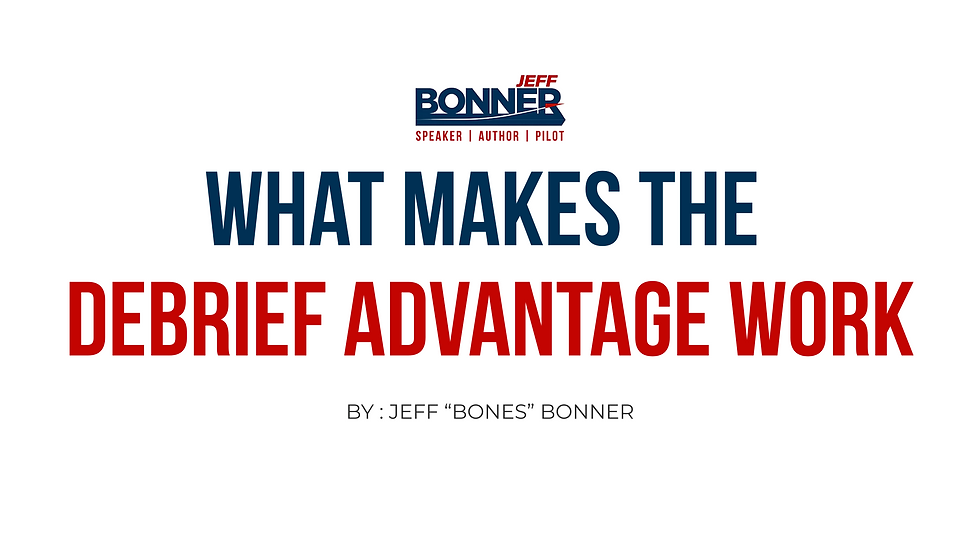What Makes The Debrief Advantage™ Work
- Jeff Bonner

- Aug 8
- 2 min read

When I walk off stage after delivering The Debrief Advantage™, I’m often approached by coaches, team leads, or executives who say the same thing: “That’s exactly what we need—but how do we make it stick?” The truth is, a keynote isn’t just about motivation—it’s about transformation. And transformation only happens when people have a habit they can anchor to real performance.
That’s why The Debrief Advantage™ doesn’t stop at storytelling. It’s built on The Daily Debrief™—my high-performance habit forged in the cockpit and refined in locker rooms, boardrooms, and briefing rooms. It’s a habit built to help teams perform under pressure, adapt faster, and win more often. It’s simple, it’s actionable, and it works—because it gives people a structure for continuous improvement without the fluff.
At the core of this habit is the G.R.E.A.T. model:
Gratitude
Review Goals
Evaluate What Worked (and What Didn’t)
Anticipate the Next Challenge
Take Time for Lessons Learned
Let me show you what that looks like in the real world.
Picture this: A pro hockey team has just come off a tight loss. Morale is low. Emotions are high. Instead of replaying the mistakes over and over, the team captain leads a quick G.R.E.A.T. debrief. They start by acknowledging the team’s grit (Gratitude). They refocus on their playoff push (Review Goals). Then they dissect two key shifts—one that worked, one that broke down (Evaluate). They visualize the next match-up, anticipating how the opponent might press them (Anticipate). And they end by extracting one key lesson—simple, sticky, and shareable (Take Time for Lessons Learned).
That’s the habit. That’s the edge. That’s what makes The Debrief Advantage™ work.
And the best part? You don’t have to be a pro athlete or a fighter pilot to use it. If your team operates in high-stakes, fast-paced, or failure-intolerant environments—this habit is your competitive advantage.
Ready to raise the bar? Let’s debrief.






Comments